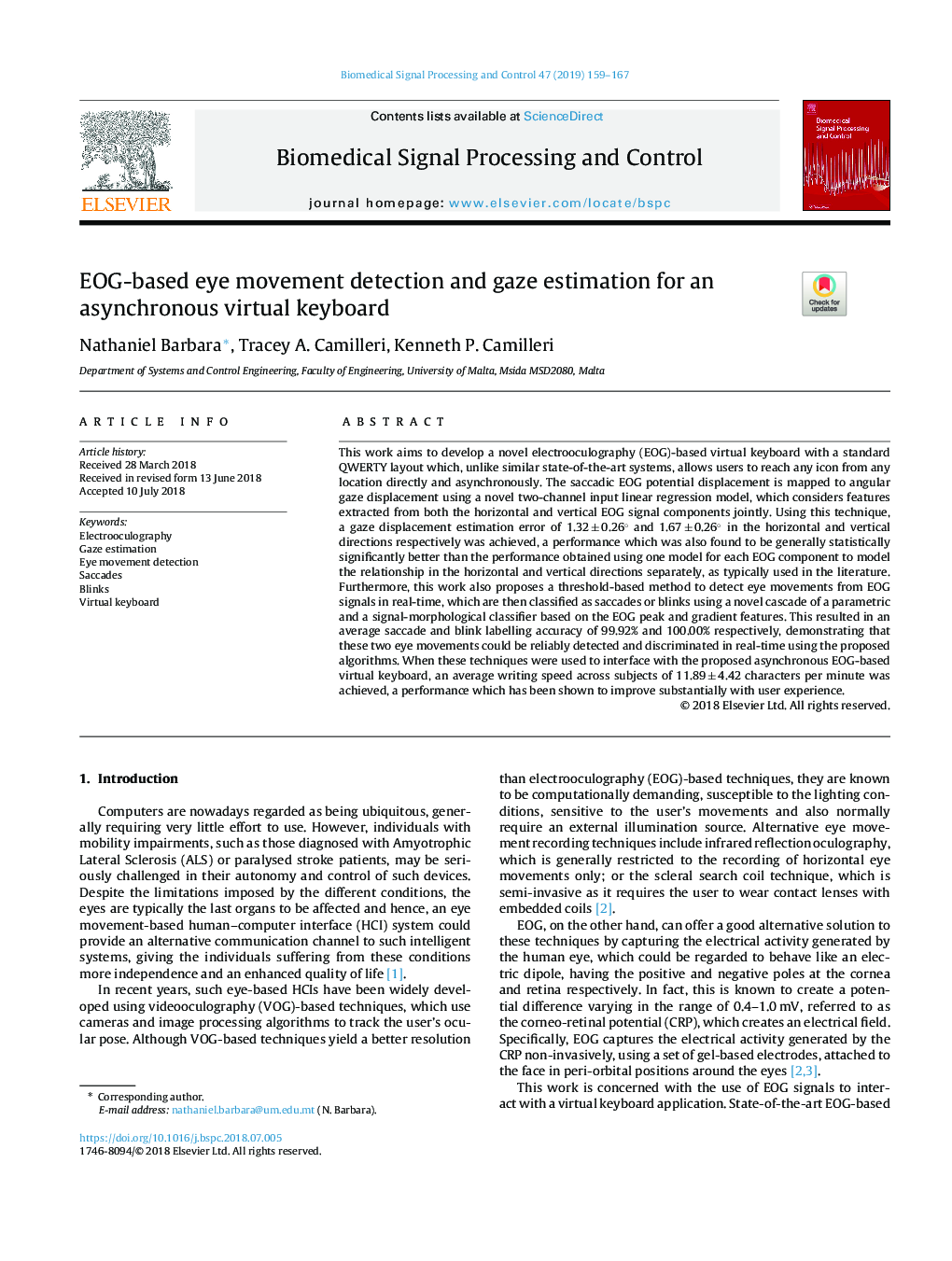| Article ID | Journal | Published Year | Pages | File Type |
|---|---|---|---|---|
| 10127178 | Biomedical Signal Processing and Control | 2019 | 9 Pages |
Abstract
This work aims to develop a novel electrooculography (EOG)-based virtual keyboard with a standard QWERTY layout which, unlike similar state-of-the-art systems, allows users to reach any icon from any location directly and asynchronously. The saccadic EOG potential displacement is mapped to angular gaze displacement using a novel two-channel input linear regression model, which considers features extracted from both the horizontal and vertical EOG signal components jointly. Using this technique, a gaze displacement estimation error of 1.32â¯Â±â¯0.26° and 1.67â¯Â±â¯0.26° in the horizontal and vertical directions respectively was achieved, a performance which was also found to be generally statistically significantly better than the performance obtained using one model for each EOG component to model the relationship in the horizontal and vertical directions separately, as typically used in the literature. Furthermore, this work also proposes a threshold-based method to detect eye movements from EOG signals in real-time, which are then classified as saccades or blinks using a novel cascade of a parametric and a signal-morphological classifier based on the EOG peak and gradient features. This resulted in an average saccade and blink labelling accuracy of 99.92% and 100.00% respectively, demonstrating that these two eye movements could be reliably detected and discriminated in real-time using the proposed algorithms. When these techniques were used to interface with the proposed asynchronous EOG-based virtual keyboard, an average writing speed across subjects of 11.89â¯Â±â¯4.42 characters per minute was achieved, a performance which has been shown to improve substantially with user experience.
Related Topics
Physical Sciences and Engineering
Computer Science
Signal Processing
Authors
Nathaniel Barbara, Tracey A. Camilleri, Kenneth P. Camilleri,
